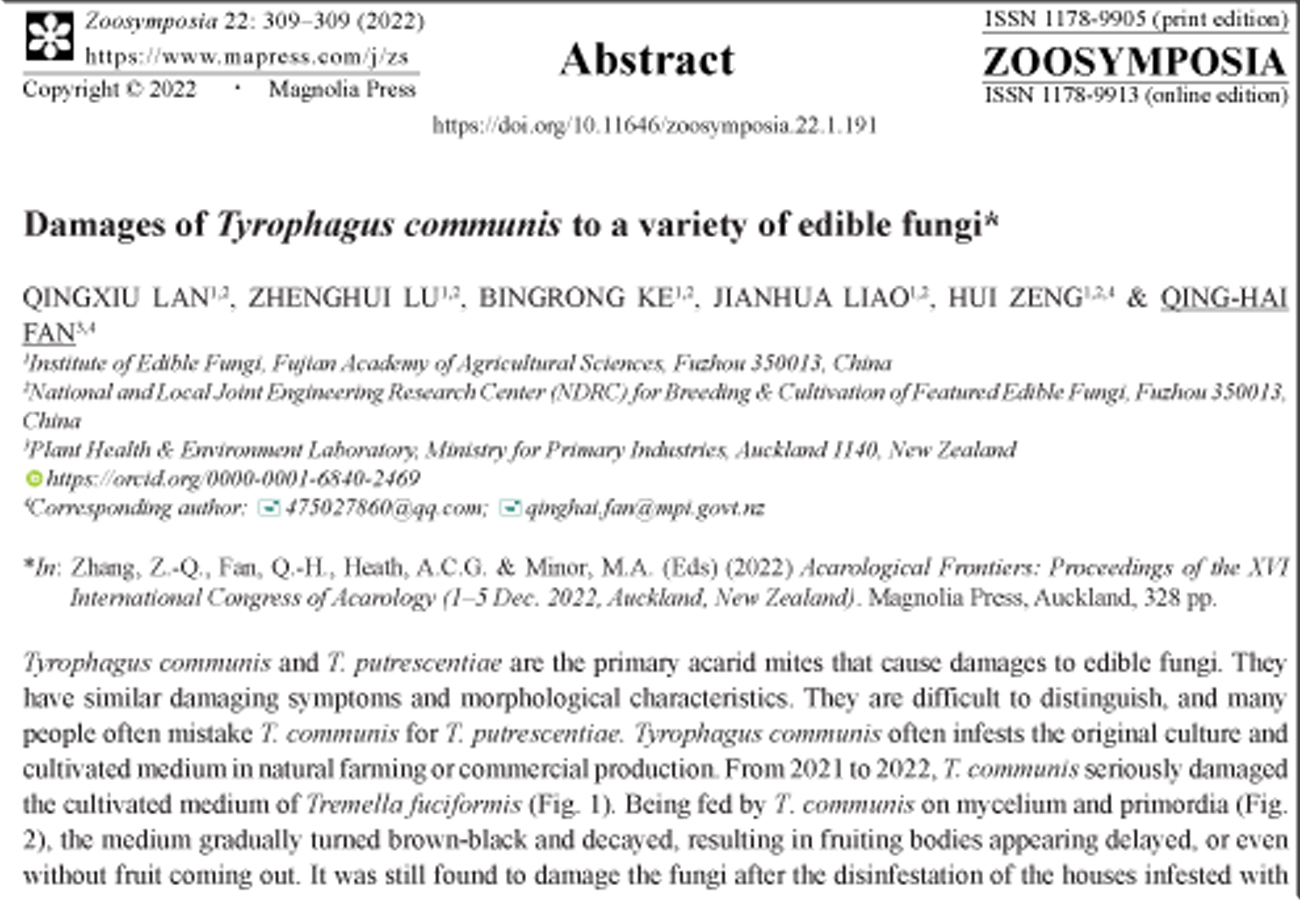Abstract
Tyrophagus communis and T. putrescentiae are the primary acarid mites that cause damages to edible fungi. They have similar damaging symptoms and morphological characteristics. They are difficult to distinguish, and many people often mistake T. communis for T. putrescentiae. Tyrophagus communis often infests the original culture and cultivated medium in natural farming or commercial production. From 2021 to 2022, T. communis seriously damaged the cultivated medium of Tremella fuciformis (Fig. 1). Being fed by T. communis on mycelium and primordia (Fig. 2), the medium gradually turned brown-black and decayed, resulting in fruiting bodies appearing delayed, or even without fruit coming out. It was still found to damage the fungi after the disinfestation of the houses infested with T. communis. In addition to Tremella fuciformis, T. communis also infested Hypsizygus marmoreus, Pleurotus pulmonarius, Auricularia polytricha and Pleurotus ostreatus. The infested original cultures must be discarded due to the loss of their value. The fruiting bodies of T. fuciformis on the infested medium emerge unevenly, being difficult to manage, and their yield and beneficial values are reduced. The safety production of these edible fungi was affected by T. communis. The biological characteristics, causes of infestation and prevention methods of T. communis need to be further studied to ensure the green and safe production of edible fungi.
References
-


